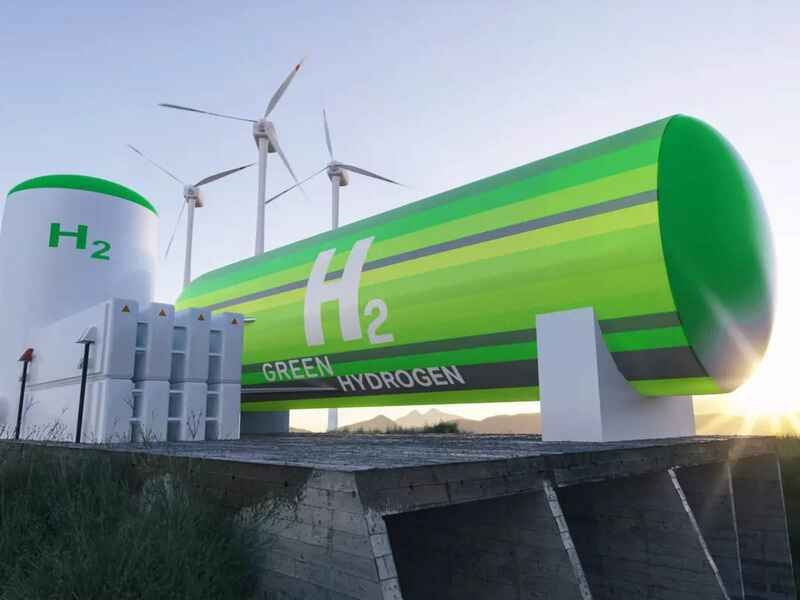Cochin International Airport Limited (CIAL) has announced a strategic agreement with Bharat Petroleum Corporation Limited (BPCL) to set up the world’s first green hydrogen plant and fueling station within an airport setting. The plant will have a capacity of 1000 kilowatts and will use renewable energy sources to produce green hydrogen, which is considered a future fuel and aligns with zero-carbon energy strategies. The project is expected to be completed by 2025 and will cost around Rs. 100 crore.
What is green hydrogen and why is it important?
Green hydrogen is hydrogen gas that is produced from water using renewable energy sources, such as solar, wind, or hydropower. Unlike conventional hydrogen, which is derived from fossil fuels and emits greenhouse gases, green hydrogen is carbon-neutral and does not contribute to climate change. Green hydrogen can be used as a clean fuel for various applications, such as transportation, shipping, and steel among others.
Green hydrogen is important because it can help reduce the dependence on fossil fuels and achieve the goals of the Paris Agreement on climate change. According to the International Energy Agency (IEA), green hydrogen could supply up to 19% of the global energy demand by 2050, avoiding 6 gigatons of CO2 emissions per year. Green hydrogen can also enhance energy security, create jobs and stimulate economic growth.
How will the green hydrogen plant at Cochin airport work?
The green hydrogen plant at Cochin airport will use solar power generated by CIAL’s own solar plants and a hydel station, which have a cumulative installed capacity of 50 megawatts. The solar power will be used to split water into hydrogen and oxygen using an electrolyser, a device that uses electricity to break down water molecules. The electrolyser will be supplied by BPCL, which has developed an indigenous technology for high-efficiency water electrolysis. The hydrogen gas will be stored in tanks and supplied to a fueling station, where it will be used to power vehicles owned by CIAL.
The plant will be established and operated by BPCL, which has expertise in technology and innovation in the energy sector. BPCL has also showcased an indigenous electrolyser at India Energy Week 2024, demonstrating its commitment to India’s energy independence through initiatives like Atma Nirbhar Bharat.
The agreement for the green hydrogen plant was exchanged at the Legislative Complex in Thiruvananthapuram on February 14, 2024, in the presence of Kerala Chief Minister Pinarayi Vijayan, who is also the chairman of CIAL. Other dignitaries who attended the ceremony included Industries Minister P Rajeeve, Chief Secretary V Venu, Additional Chief Secretary K R Jyothilal, and officials from BPCL Kochi Refinery, CIAL and Norka.
What are the benefits of the green hydrogen plant at Cochin airport?
The green hydrogen plant at Cochin airport will have multiple benefits for the environment, the economy and the society. Some of the benefits are:
- It will reduce the carbon footprint of the airport and contribute to its vision of becoming a zero-carbon airport in the future. The plant will save around 10,000 tonnes of CO2 emissions per year by replacing diesel with green hydrogen for vehicles.
- It will showcase India’s leadership in green energy and innovation and inspire other airports and industries to adopt green hydrogen solutions. The plant will be a model for other airports in India and abroad to replicate and scale up.
- It will create new opportunities for research and development, skill development and employment in the green hydrogen sector. The plant will generate direct and indirect employment for around 500 people during construction and operation phases.
- It will support the national policies and programs on renewable energy, such as the National Hydrogen Energy Mission, which aims to promote green hydrogen production and use in India. The Mission has set a target of producing 5 million tonnes of green hydrogen annually by 2030, which will require an additional renewable energy capacity of 125 gigawatts.
Recent Blog : Banks Speed Up DRTs with Advocate Reviews
